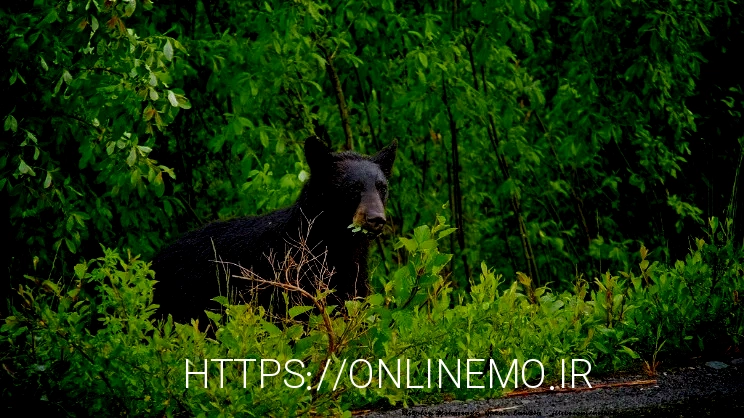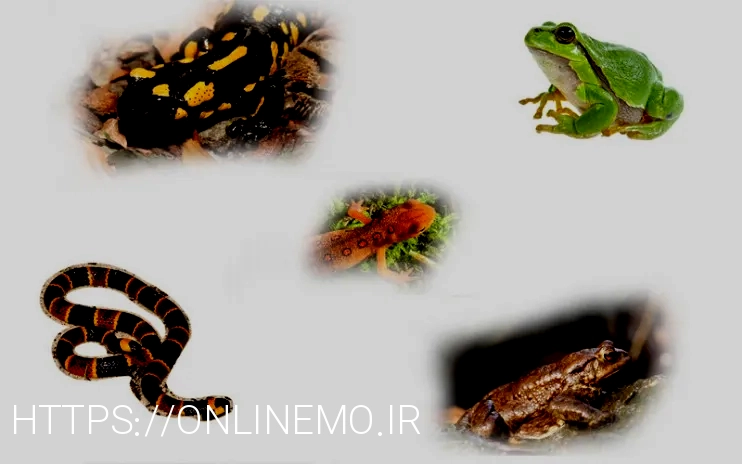Western Chimpanzee, Pan troglodytes verus
This research was conducted in accordance with regulations of the Uganda National Council for Science and Technology and Uganda Wildlife Authority. The study also complied with the American Society of Primatologists’ Principles for the Ethical Treatment of Non-Human Primates. “The more we study our primate cousins, the more we realise that they have the bases of most of our cognitive abilities, including for language, culture and fairness,” she said. Dr Erica van de Waal, a psychologist at the University of St Andrews, said the findings add to the growing list of parallels that have been observed between human and ape behaviours. In a final display of self-control, around half the chimps chose to hoard raw potato – setting aside up to 28 slices – when they knew they would be presented with the option of cooking it later on.
Chimps learn most of their behavior from adults when they are young (research suggests that older chimps are often unable or unwilling to learn new behaviors). Because of this, we can see marked behavioral differences not just among different subspecies, but among different groups of the same subspecies. How one Western chimpanzee collects ants can be completely different from a Western chimpanzee only a few miles away. Many chimps in captivity have lived to well over 50; however, a more typical life expectancy for a captive chimpanzee is between 30 and 40 years. In the wild, most chimpanzees that survive their infancy will live between 15 and 25 years. Chimpanzees use facial expressions to show emotions, but a human smile that shows all your teeth is seen as a threatening expression to chimpanzees.

The humanlike antics are hilarious because chimps seem so uncannily like us, yet so different. Among many, many other chimp skills, primatologists have learned that our closest evolutionary cousins fashion spears to hunt for prey, trade food for sex, play with dolls and don’t take kindly to drones invading their space. As the climate changes, ecosystems change with it, further affecting the habitats of chimpanzees. Where chimpanzees would have been able to migrate to more hospitable areas, they’re prevented by the expansion of human-occupied urban areas.

This means that direct observations of feeding can be reduced to a matter of minutes per day. Therefore, direct observations were used on an opportunistic basis and foods were collected following confirmation that a certain food item was eaten by the chimpanzees. In both sites, whenever foods were selected by humans, efforts were taken to match overt cues of readiness of foods for consumption.

Although peak fruiting periods have been registered at Kanyawara, they vary greatly between years, thus the fruiting period is not strictly linked to certain months or climate season (Chapman, Wrangham, Chapman, Kennard, & Zanne, 1999). Female chimpanzees of the Kanyawara community were observed by MU from January 2014 to June 2015. The Kanyawara chimpanzee community ranges in the northwestern sector of KNP and has been studied since 1983 (Isabirye-Basuta, 1988; Wrangham et al., 1991). At the time of this study, the Kanyawara community comprised 47 to 51 chimpanzees of which 17 were adult females. Fourteen lactating female chimpanzees who were fully habituated were selected as study subjects. Estimated ages at the start of the study were between 13.3 and 54.9 years.

When humans eat bushmeat that comes from a chimp, they’re susceptible to picking up any diseases that it may have been carrying. Although the killing or capture of chimpanzees is illegal, poaching remains a huge threat to chimpanzees. Chimpanzees have the widest geographic distribution of any great ape species, spanning more than 2.6 million square kilometres. The chimpanzee habitat is typically found within tropical rainforests, although they do also live in woodlands and grasslands around West and Central Africa.

This behavior is more commonly observed in chimpanzees living in environments with limited access to other protein sources. Insects, such as termites and ants, are a valuable food source, providing the chimps with essential amino acids and fats. They have adapted to thrive in various habitats, allowing them to consume different types of foods. Their diet consists of fruits, nuts, leaves, vegetation, insects, and even meat. Let’s delve deeper into the third heading on our journey and discover the importance of fruits and nuts in a chimp’s diet. These resourceful creatures have been observed using tools like twigs or sticks to extract insects from tree crevices or termite mounds.

While fruits and nuts make up a significant portion of their diet, chimps also rely heavily on leaves and vegetation. They consume a variety of leaves, including young and tender ones, to obtain fiber and minerals. Chimpanzees have the ability to distinguish between different types of leaves and select those that are most palatable and nutritious.
These communities are led by an alpha male, who is supported by a group of other males. Belonging to the great ape species, chimpanzees are very closely related to humans, sharing 98.7% of our DNA. Where DNiy is the daily amount of nutrient i from food item y (ripe fruit, young leaves, pith, unripe fruit, flowers, back) and ME is the total daily metabolizable energy intake.
So what do the modern apes—and in particular our closest relatives the chimpanzees and bonobos—eat? Recently, a new study by David Watts at Yale University and colleagues reconsiders the answer for chimpanzees in Kibale National Park in Uganda. From the perspective of our modern human diet, eight features of the chimpanzee diet in Kibale stand out.
Well, incorporating a variety of leafy greens and other plant-based foods into our meals is a great way to boost our overall nutrition. Leafy greens like spinach, kale, and collard greens are packed with vitamins and minerals that are essential for our health. Improvement of healthcare throughout western Africa would also help conserve the chimpanzee population. Other than the obvious positive effects of better healthcare for humans, it would also decrease the transfer of diseases to chimpanzees. Additionally, scientists have developed an Ebola vaccine for apes, which could not only save apes but perhaps humans as well. However, there are several legal and ethical hurdles that must be passed before such a vaccine can be used in the wild.

It occurs in most or all adult males, involves a distinct smashing technique, and frequently gives rise to food sharing with other group members. For instance, HIV is a disease that had origins in the ape species, and it’s believed that humans may have picked it up through hunting practices. Evidence suggests that the virus likely spread from chimpanzees to humans in Kinshasa, Democratic Republic of Congo, in the 1920s. If it is a small monkey, a chimpanzee can go through the trees to get it, but in the case of needing help, each member of the group has a hunting role.
Many come to the local homes of humans to find whatever food they can. Most of the time, they’ll take fruit or any other easily accessible food. But on some occasions, the chimps have taken and killed small children. Humans retaliate by killing the chimps to protect their families, leading to a steeper decline in the chimpanzee population. Chimps are known for their intelligence and remarkable problem-solving abilities.
This subspecies of the common chimpanzee also used to inhabit Benin, Gambia, and Togo, but has gone extinct in those areas. Western chimpanzees live in groups that range in size from 11 to 63 individuals. They can communicate with a range of vocalisations and facial expressions, and maintain friendships by grooming each other. Peering through the grass, I saw the chimpanzees stop moving and then gather together.
We were located in a vantage that was slightly higher than the chimpanzees, but still could only see parts of their bodies through the dense vegetation. As I continued watching the chimpanzees, it finally became clear that they were using sticks to forage. I initially thought that they were ant dipping, as Bossou chimpanzees were known to use sticks to dip for safari ants on the ground. However, I was then astounded to realize that the chimpanzees were putting the sticks into water! Moments later, I could see that they were scooping algae (Spirogyra spp.) floating on the surface of a pond.
These teeth are likely to incur larger and more variable forces than the postcanine teeth, as internal tissues that are masticated present only a limited mechanical challenge. Chimpanzees are traditionally described as ripe fruit specialists with large incisors but relatively small postcanine teeth, adhering to a somewhat narrow dietary niche. Field observations and isotopic analyses suggest that environmental conditions greatly affect habitat resource utilisation by chimpanzee Doeat.top Teeth of carnivores populations. Here we combine measures of dietary mechanics with stable isotope signatures from eastern chimpanzees living in tropical forest (Ngogo, Uganda) and savannah woodland (Issa Valley, Tanzania). We show that foods at Issa can present a considerable mechanical challenge, most saliently in the external tissues of savannah woodland plants compared to their tropical forest equivalents. This pattern is concurrent with different isotopic signatures between sites.
Western chimpanzees live in a range of West African forest habitats including lowland tropical forests, mountainous forests and swamp forests. Western chimpanzees are one of the four subspecies of the common chimpanzee. Chimpanzees have long arms, hands, and fingers, which help them climb trees and swing from branch to branch. The tool was held between the index and the middle finger, in the same type of fine grip used for ant dipping. Fotaiu made a swiveling action with her wrist, gently pushing the stick forward and backward to collect algae. She then lifted the stick up to her mouth and pulled the stick sideways through her lips, thus gathering algae in her mouth.

The next most common tool material was the stalk of a sort of ginger (Costus deistelli, Zingiberaceae). Interestingly, the materials used for algae scooping did not overlap with those for ant dipping. This might be at least partly due to differences in the functions of tool actions, scooping vs. dipping, as well as the availability of the plants near the pond vs. more terra firma forest. All 18 members of the Bossou community at that time visited the pond and all individuals over 2.5 years old showed algae scooping. The youngest age that chimpanzees use stone tools in nut-cracking is 3.5 years.
Western chimpanzees have rounder muzzles and more prominent brows than Eastern and Central chimpanzees. Researchers also report that they have dozens of unique nonmetric skull features. Nonmetric skull features are anomalies in the skull that cannot be numerically measured, but can be observed and described by experts. While human thighs slope inward, allowing us to keep are legs together and walk upright, chimpanzee thighs are sloped outward. This fact, along with our stronger pelvic muscles and spinal adaptations, is why we can walk upright while chimps can only do so for short moments. The western chimpanzee is listed as Critically Endangered by the International Union for Conservation of Nature.
We recorded the number of discrete food units (individual items e.g., one fruit, a strip of leaves or bunch of flowers) consumed per minute throughout the feeding bout. We used the methods presented in detail in Uwimbabazi et al. (2019) to collect behavioral data and plant foods. These plant foods included ripe fruit, young leaves, seeds, flowers, pith, bark and wood from trees, lianas and other terrestrial herbaceous vegetation (THV).
Currently our understanding of chimpanzee dentition and its functional aspects are limited by a lack of data on the broader dietary mechanical challenges faced species-wide16,17. In fact, data on the mechanical properties effectively hail from one tropical forest18, and it is doubtful these values accurately reflect the dietary variance of the species. Unlike forest-dwelling chimpanzees, savannah chimpanzees tend to incorporate and rely upon many non-fruit items19.
So, to better understand these remarkable creatures, let’s explore some interesting and surprising chimpanzee facts. With their long arms and short legs, chimpanzees normally walk on all fours in a behaviour known as knuckle-walking, though they can also stand and walk upright. They’re particularly agile at climbing trees and swinging from branch to branch. Adult chimpanzees can range from around four to five feet tall, weighing anywhere from 70 to 130 pounds. This would have freed up time for technological ingenuity and allowed larger populations to flourish.
